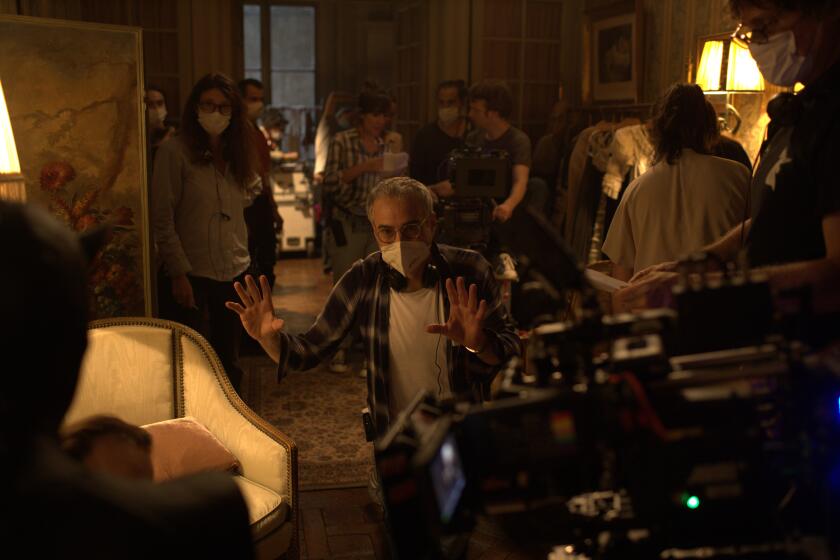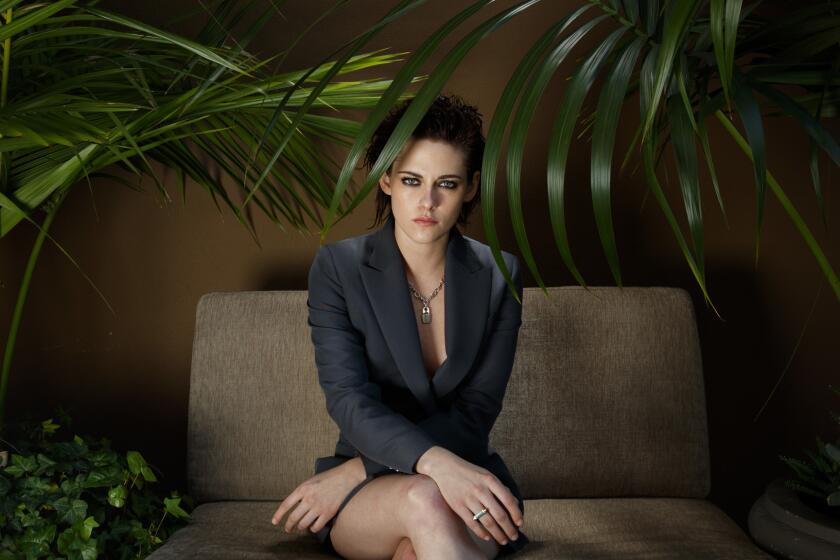HBO’s dazzling ‘Irma Vep’ is just the TV series to restore your faith in movies
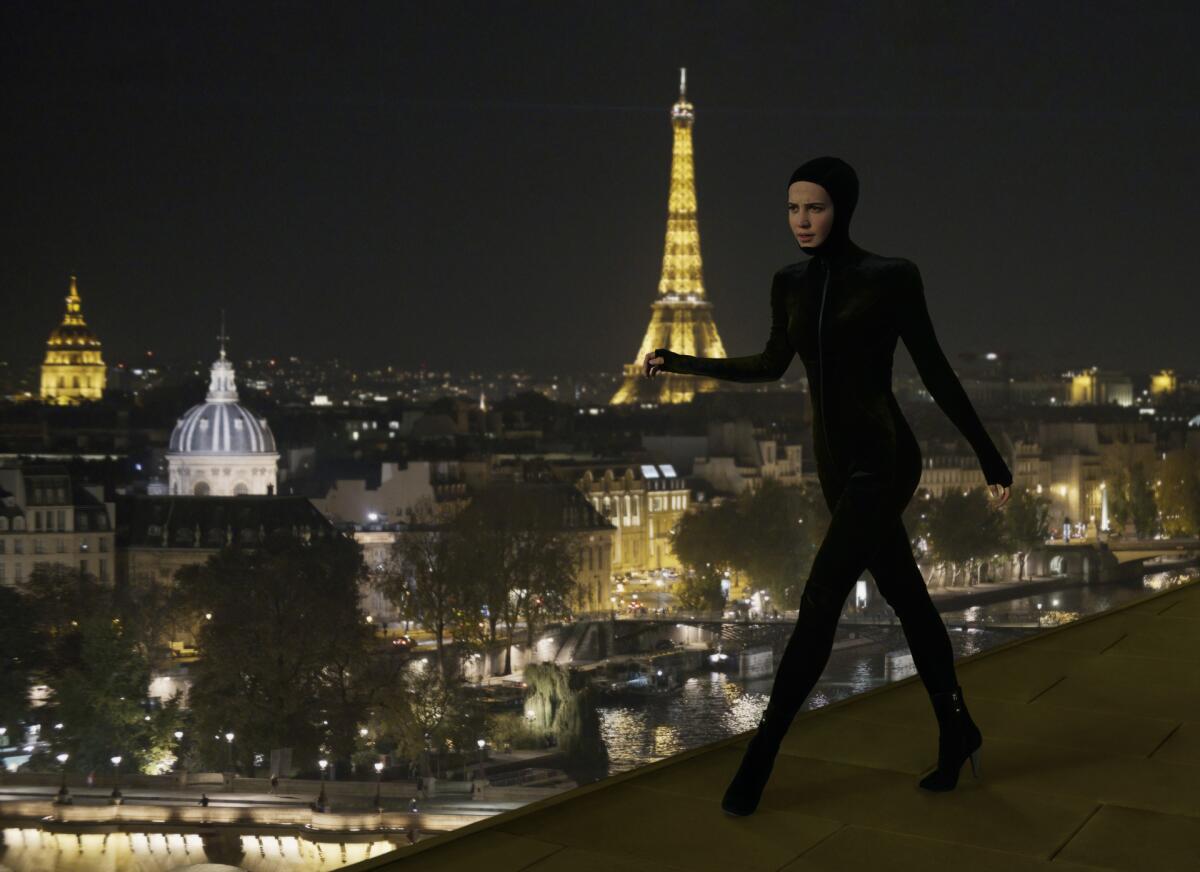
For a show as deliriously playful as “Irma Vep,” the HBO limited series created, written and directed by the French filmmaker Olivier Assayas, its deepest truths are often the most bluntly spoken. One speaker is Mira Harberg (Alicia Vikander), a Hollywood star who’s playing the Parisian jewel thief Irma Vep in a remake of “Les Vampires,” Louis Feuillade’s 1915 crime serial. Enjoying a free moment with another actor, Cynthia (Fala Chen), Mira quietly extols the power of cinema and laments its growing obsolescence in a content-saturated era: “Movies are a portal to some sort of spiritual world we don’t have access to anymore,” she says. “We’ve lost our faith.”
Later in the same episode, Mira’s raucous German co-star, Gottfried (Lars Eidinger), will celebrate his last day of shooting by spraying the crew with Champagne and destroying a few pieces of furniture, part of a life of hedonistic risk tied to his ride-or-die belief in the movies: “Cinema was the wild west. Why are we making movies now?” he rants. “Who’s willing to put their life on the line for movies? We live in boring, dark, dull times. Where is the sense of adventure? Where’s the mayhem? Where’s the chaos?”
Now, it’s entirely possible that Gottfried, a cocaine addict who has a close brush with death mid-production, simply hasn’t been paying attention. From day one, mayhem and chaos have been this production’s only real constants. The wildly neurotic director, René Vidal (Vincent Macaigne), has a bad habit of verbally and sometimes physically attacking his actors. Those actors (they include Vincent Lacoste and Hippolyte Girardot), struggling to accommodate their egos within the parameters of an early 20th century text, constantly question their characters’ motivations while refusing to examine their own.
In remaking his 1996 film ‘Irma Vep’ for HBO, Olivier Assayas not only confronted the end of his marriage to Maggie Cheung. He consulted her on it.
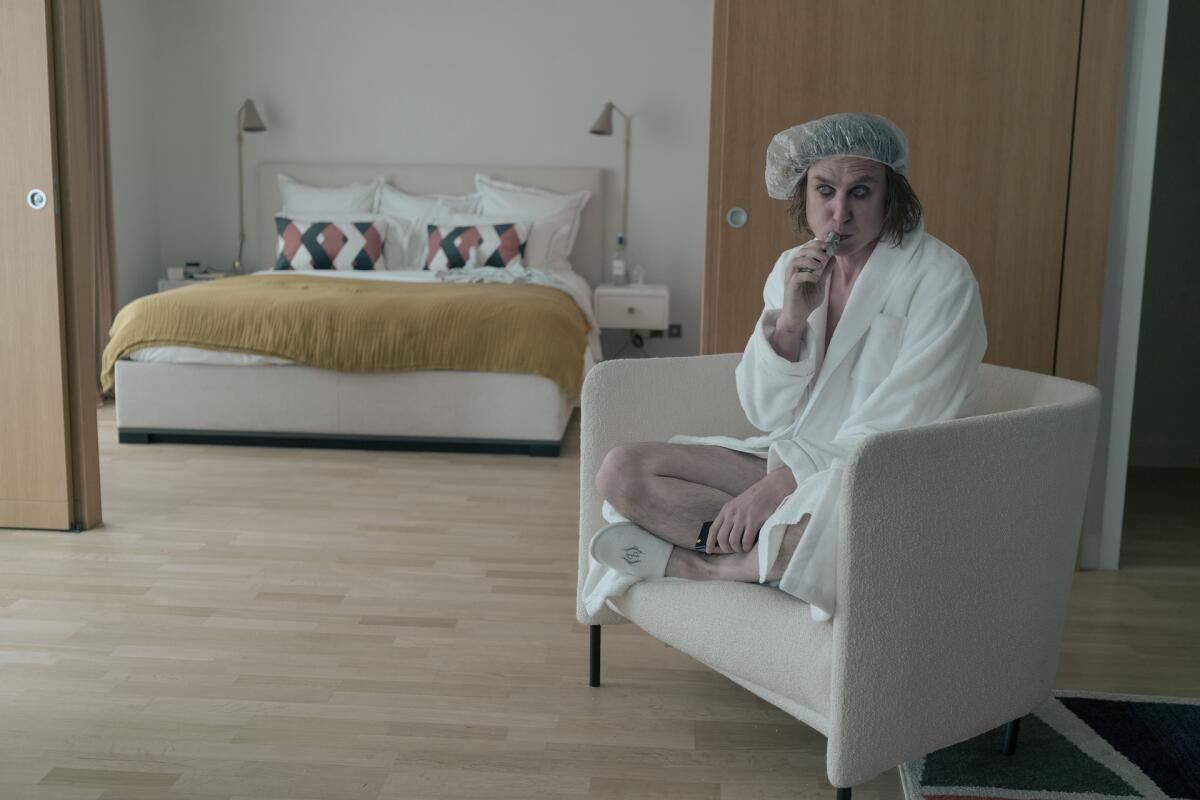
Everyone is at the financial mercy of a cosmetics giant that has bankrolled the production solely in hopes of convincing Mira to become the face of its new fragrance, Dreamscape. That could be an allusion to the increasingly blurry, dreamlike power this “Irma Vep” exudes as it unfolds, or perhaps the waking nightmare that the shoot soon becomes.
What a mess! But also, what déjà vu. “Irma Vep” is a serialized remake of Assayas’ 1996 feature of the same title, which also follows an actor — in this case, the Hong Kong star Maggie Cheung, playing a version of herself — who has been cast in a remake of “Les Vampires.” From the moment she arrives, Maggie is our guide to a production that never finds its footing and ultimately collapses. The director, also named René Vidal (and played by the great Jean-Pierre Léaud), is replaced. Maggie is also replaced, unsurprisingly, by a white French actor.
The new “Irma Vep,” for all the behind-the-scenes turbulence it shows us, ends on a more hopeful note. (The eighth and final episode airs Monday.) It’s a show of dizzyingly prismatic pleasures, and while it’s a delight whether you’ve seen the movie or not, there’s enormous pleasure in setting it beside its predecessor and marveling at the sheer accumulation of meta-layers. If the first “Irma Vep,” a movie about the making of a movie adapted from a serial, had many acerbic insights into the global film industry in the mid-’90s, this “Irma Vep,” a series about the making of a series adapted from the same serial, offers an even more deliciously barbed view of the biz in the present day.
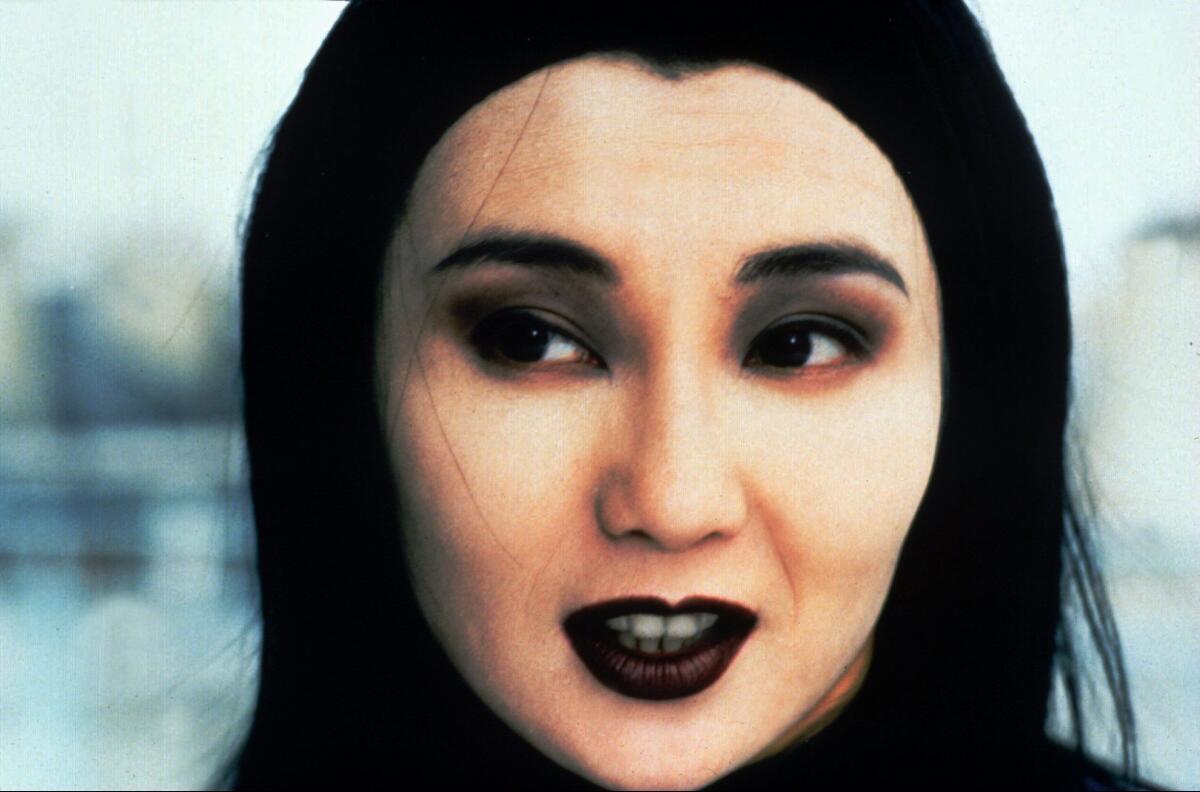
If Assayas is weighing in on the past and present, he’s also taking stock of the differences between cinema and television, a debate that frequently consumes his characters. Were Feuillade and his silent-era contemporaries the first content creators, one asks, bent on getting audiences hooked on a hot new platform? Or were they true artists, fearlessly unbeholden to market pressures as they pushed a new medium to its boundaries and beyond? And speaking of boundaries: Is the famous scene of Irma Vep’s capture a thinly coded sexual assault — and if so, what responsibility does a filmmaker, especially a male filmmaker, owe his actors and his audience in the era of #MeToo?
In toying with some of these questions, Assayas gladly puts himself — or rather René, his barely disguised avatar — on the spot. Irritable, shortsighted but also bighearted, an exacting perfectionist whose life couldn’t be more of a shambles, René puts a more abrasive, exaggerated edge on some of Assayas’ own ideas. At one point he describes his “Vampires” revamp as “admittedly a bit long, divided into eight pieces. But I’m not making a series; I’m making a film.” Some may remember Assayas describing his brilliant 2010 drama, “Carlos,” as a five-and-a-half-hour film, and indeed, it played film festivals, showed in movie theaters and received accolades from film critics. It also aired as a three-hour miniseries on television networks all over the world and won numerous TV awards.
The HBO/A24-produced “Irma Vep,” for its part, is very much television — and terrific television at that — but it also possesses an impishly cinephilic sensibility. This is Assayas’ first production since the onset of the COVID-19 pandemic, and as such it feels like both a sly concession to our streaming-dominant era and a defiant argument for the power of movies. It’s ingeniously ambivalent about its own identity.
We surveyed The Times TV team to come up with a list of the 75 best TV shows you can watch on Max (formerly HBO Max). And yes, your disagreement is duly noted.
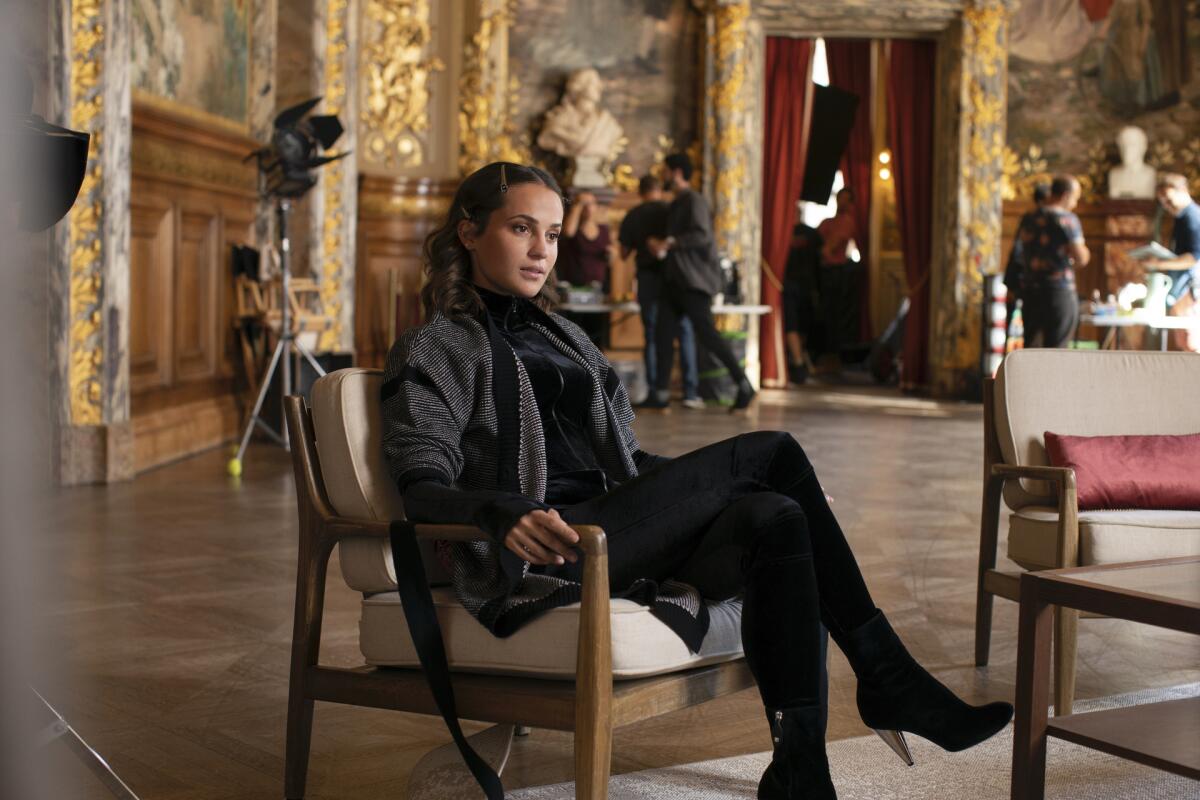
The rhythms may be episodic, but the ambience could hardly be more Assayesque. The swirling ensemble is a who’s-who of Assayas veterans, including Macaigne, Jeanne Balibar, Nora Hamzawi, Alex Descas and, in a glittering final-episode cameo, Kristen Stewart. Assayas wrote and directed every episode, much as he does all his movies. Among those movies, this “Irma Vep” is carrying on a particularly spirited conversation with Assayas’ art-world comedies like “Non-Fiction” (2019), with its anxiety over how digital technology is reshaping media, and “Clouds of Sils Maria” (2014), with its dishily intimate scenes between an actress and her assistant (to say nothing of its casual contempt for most Hollywood blockbusters).
This “Irma Vep” is catnip, in other words, for Assayas’ regular art-house admirers. That it never feels lofty or inaccessible — that it immediately yanks us into a world of ridiculous, endearing, brilliant, insufferable and thoroughly human individuals — speaks to Assayas’ skill as a writer of characters and a director of actors. But it also speaks to the enthusiasm with which he embraces the storytelling possibilities of a longer-form narrative. Among other things, this “Irma Vep” is far more of a remake of “Les Vampires” than the first one was; with its loving re-creation of scenes from Feuillade’s original, it fulfills, in gorgeously evocative bits and pieces, a dream that Assayas, like René, has long held dear.
That may sound contradictory, but then contradiction and uncertainty have always been Assayas’ sweet spots. Whether he’s dramatizing the history of ’70s global terrorism (“Carlos”), the revolutionary fervor of post-1968 France (“Something in the Air”) or the fate of a family’s inheritance (“Summer Hours”), he remains our great chronicler of a world forever in social, cultural and technological flux. At home and adrift mean the same thing in an Assayas movie, and it’s precisely in this destabilization that his characters, wanderers and rebels all, paradoxically find their foothold. Why should Assayas himself be any different?
* * *
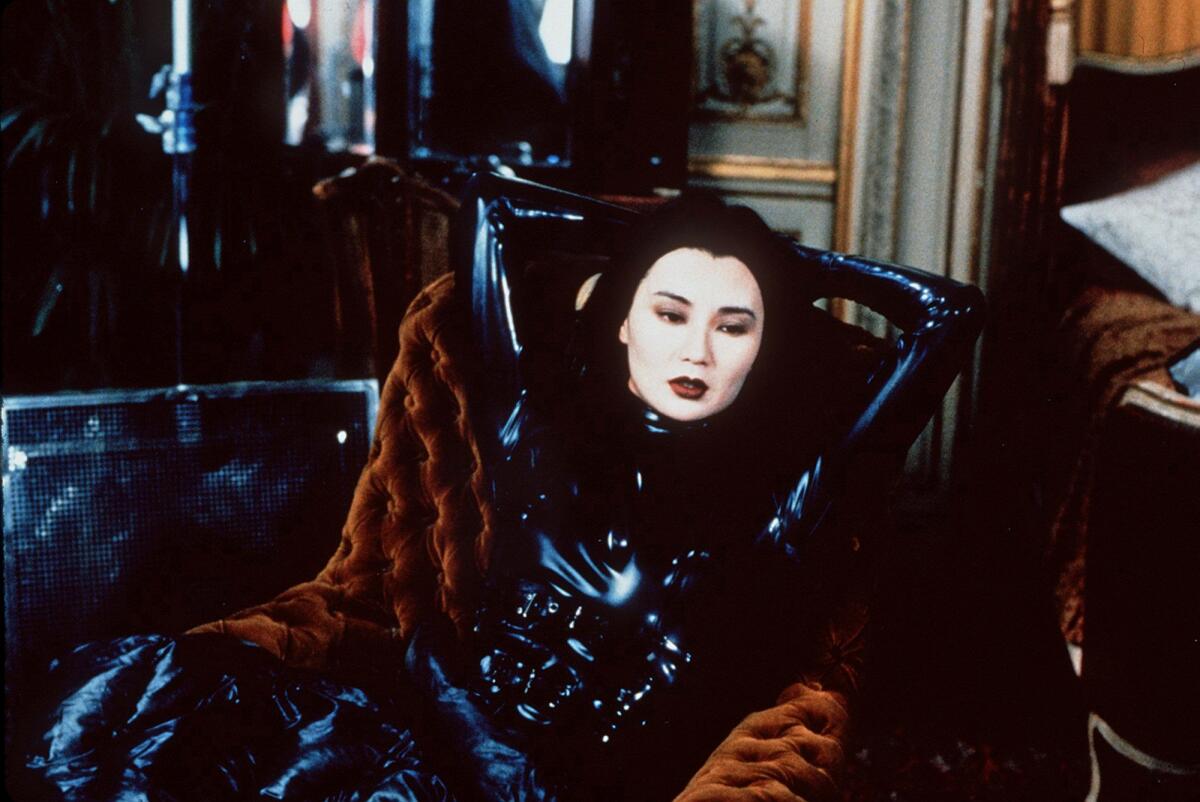
In the original “Irma Vep,” Cheung plays the beautiful outsider; she’s admired, desired, condescended to and finally dismissed for purely racist reasons. Vikander’s Mira is a more privileged outsider, a white, Swedish-born, U.S.-based actor with serious Hollywood cachet. A red-carpet supernova just coming off a successful blockbuster, she might seem like the ready-made diva in this equation, with the full complement of celebrity entitlements and entanglements. Chief among the latter is a recent breakup with her former assistant, Laurie (Adria Arjona), who ditched her to marry said blockbuster’s hack-on-the-rise director, Herman (Byron Bowers).
But Mira turns out to be far less of a prima donna than her fellow actors, as Vikander’s subtle, sensitive performance gradually reveals. She’s a consummate professional and a surprising team player; more than once she uses her not-inconsiderable leverage to help her colleagues, including her whip-smart new assistant, Regina (a wonderfully sardonic Devon Ross). Crucially, too, Mira is one of the few people on the set who loves and understands “Les Vampires” enough to wonder — and more excitingly, imagine — how an update of a 1915 serial might speak to a contemporary audience. That may make Mira seem a touch idealized, and maybe she is. When she speaks about the glory of cinema, she waxes so touchingly poetic, you’d almost think a film critic had written her dialogue.
And in a sense, one did. Assayas, now 67, was a critic before he turned to filmmaking in his early 30s, and his movies, even at their most viscerally gripping (“Demonlover”) or emotionally overwhelming (“Summer Hours”), often carry a theoretical dimension that is both whimsical and rigorous. The first “Irma Vep” was a great film and a great piece of filmed criticism. Its defining sequence — of Cheung slinking around the rooftops of Paris in Irma Vep’s form-hugging black catsuit, already immortalized in the serial by the silent screen legend Musidora — took an archetypal image nearly as old as cinema itself and invested it with matter-of-fact sensuality and a raw, liberated post-punk energy.
Kristen Stewart settles into a chair and trains her piercing, kohl-rimmed eyes on you.
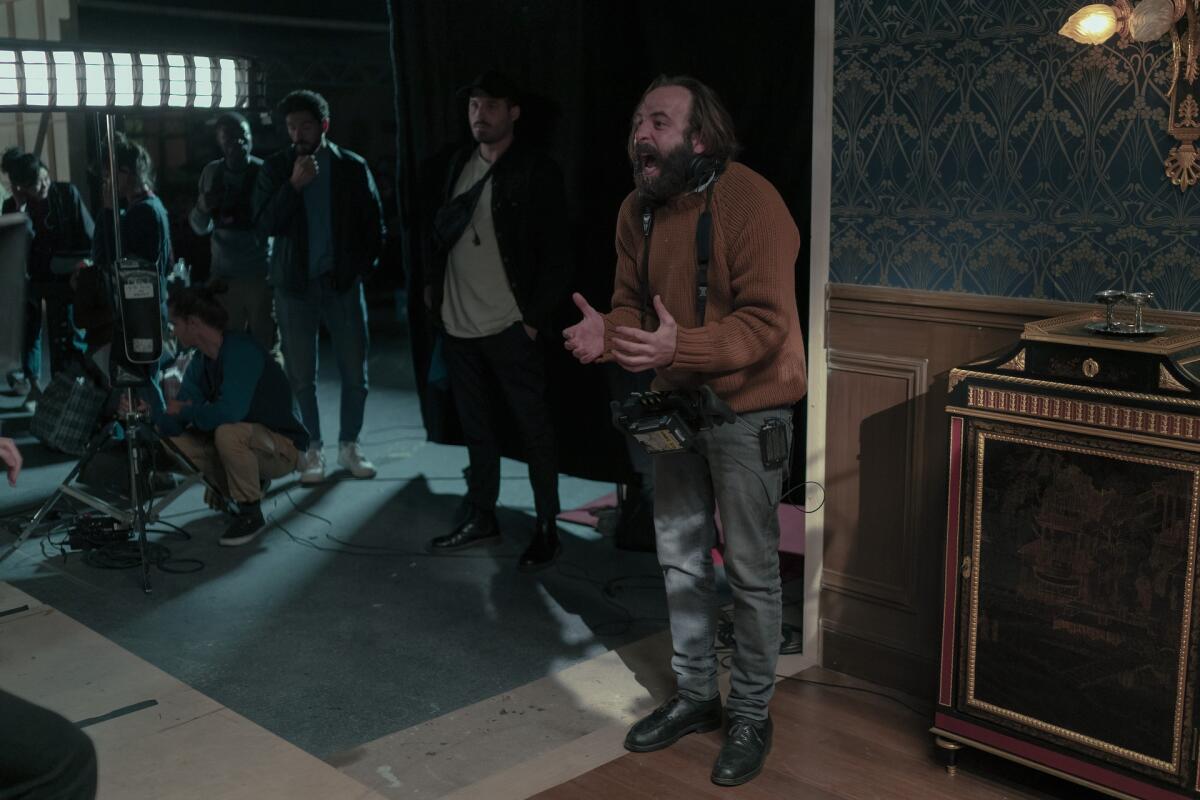
That energy has receded somewhat in the new “Irma Vep,” as befits its glossier sheen and extended running time. That might sound like a knock, and indeed, I had a few knocks at the ready when word first emerged that Assayas was remaking one of his early masterpieces. How could any performer withstand the inevitable comparisons to Cheung at her most incandescent? Why cast a white actor in a role previously played by an Asian actor, perhaps compounding an injustice notably called out at the end of the original film? Why excavate the painful and bittersweet emotional baggage of the first “Irma Vep,” which is, among other things, one of the purest examples of a director falling in love with his star through the lens of a camera? (Cheung and Assayas married in 1998 and divorced in 2001, several years before Cheung announced her early retirement from acting.)
The immediate answer to these questions is that Assayas has clearly been thinking about them himself, and he’s built them directly into his cleverly rejiggered story. In the meta-to-the-max world of the series, some version of the 1996 “Irma Vep” exists, directed not by Assayas but by René. An equivalent version of Cheung exists here, too, in the form of a now-retired Hong Kong star, Jade Lee (played by the Chinese-born Vivian Wu). Jade appears to René in a nighttime dream sequence in which they swap questions: Why hasn’t she responded to his emails? How could he take on “Les Vampires” without her? As Assayas has acknowledged in interviews, it’s a version of a conversation — startling in its emotional nakedness — that he wishes he could have with a former creative and romantic partner whose absence haunts him still. “Irma Vep” 2.0 may be Assayas’ reckoning with an ever-shifting medium, but it’s also very much his reckoning with himself.
That’s why one of the more persistent criticisms of this “Irma Vep” — “Alicia Vikander is no Maggie Cheung” — largely misses the point. The series is its own wrenching acknowledgment that no one has replaced or could replace Cheung, in “Irma Vep” or in Assayas’ life and career. (He also directed her in 2004’s “Clean,” not long after their separation.) At times Assayas holds both Maggie’s Irma Vep and Mira’s Irma Vep in counterpoint, superimposing images from the latter over the former. The effect is haunting and melancholy, but it isn’t competitive. That black catsuit, tight as it is, proves elastic enough to hold them both.
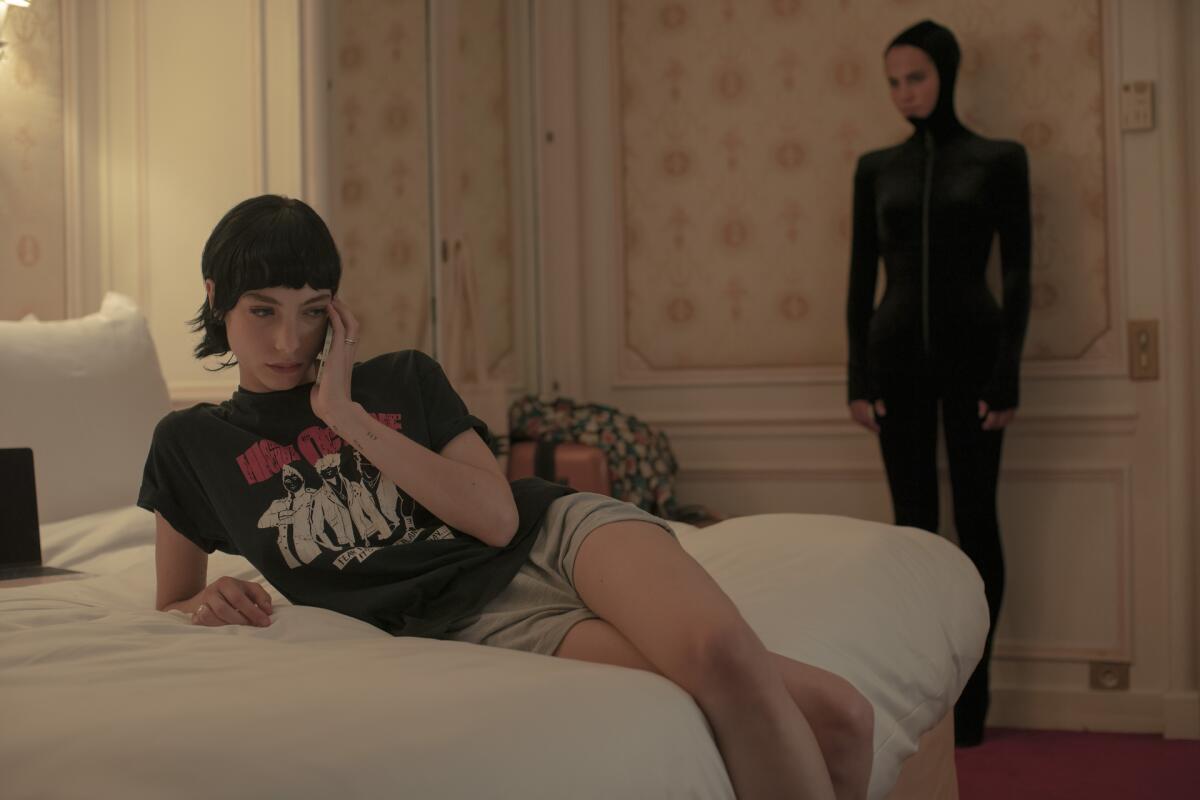
At the same time, Mira’s suit is noticeably sleeker and blacker, less rubbery and reflective than Cheung’s, which feels like a nod to an increasingly digital, effects-reliant medium. As if to drive home the point, Mira, harnessing her suit’s liquid, feline powers, starts magically walking through walls. She slides from room to room, spying on the characters around her with an omniscience that aligns her with her creator. She’s an actor merging with her character, but she’s also merging with a technology that, far from rendering her obsolete, does its part to keep her alive.
“Her soul has been haunting cinema for a century. She’s a shapeshifter, reinventing herself every generation,” Macaigne’s René says of Irma Vep, with ineffable tenderness. “She’s a spirit. And spirits are not good or bad, they are just spirits. Cinema awakened her the same way mediums conjure the dead to reconnect.” René’s use of the word “mediums” sent my mind racing back to one of Assayas’ greatest films, “Personal Shopper” (2017), which tells the story of a literal medium, in the spiritual rather than artistic sense. The pun is inspired; it also reminds us that cinema has always been an art of channeling ghosts, of communing with and even reanimating the dead.
Like “Personal Shopper,” this “Irma Vep” is a ghost story about the deep, unshakable burden of loss. But within that loss, Assayas sees the possibility of regeneration, of idiosyncratic risks and beautiful discoveries; he articulates that faith in the power of moving images that Mira is looking for. Irma Vep helps her find it, just as “Irma Vep” — the movie, the series and everything in between — may yet help us find ours.
More to Read
The complete guide to home viewing
Get Screen Gab for everything about the TV shows and streaming movies everyone’s talking about.
You may occasionally receive promotional content from the Los Angeles Times.
